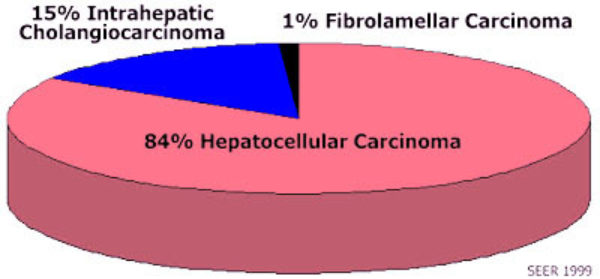There are different types of liver cancer. Determining the cancer type impacts the treatment choice.

Types of Liver Cancer
As the largest internal organ, the liver performs a variety of vital functions. Different cell types are responsible for these diverse functions. The basic liver cells (known as hepatocytes) produce blood clotting factors, synthesize bile, metabolize proteins and remove toxins from the blood. The liver has a rich network of blood vessels carrying nutrients and toxins from the intestine to the liver and back to the circulation. The liver also has a system of bile ducts which carry bile (a green fluid that helps digestion of food) from the liver and gall bladder into the intestine. Tumors may arise from any of these types of cells and thus there is a wide variety in types of liver cancer.
Tumors can be generally thought of as benign or malignant. Benign tumors are unlikely to metastasize (spread throughout the body) while malignant tumors are cancerous and are likely to spread to other organs.
Cell of Origin
Below are the different liver cancer types, listed by cell of origin.
| Cell of Origin | Benign Liver Tumors | Malignant (cancerous) Liver Tumors |
|---|---|---|
| Hepatocytes | Adenoma Focal nodular hyperplasia | Hepatocellular carcinoma Hepatoblastoma Fibrolamellar carcinoma |
| Vessels | Hemangioma | Angiosarcoma |
| Bile duct | Adenoma Hamartoma (Von Myenberg Complex) | Cholangiocarcinoma |
Liver Cancer Without Cirrhosis
Although most liver cancers develop in patients with liver scarring (cirrhosis), some patients develop liver cancer without first developing cirrhosis. Johns Hopkins researchers have a particular interest in this type of liver cancer.

